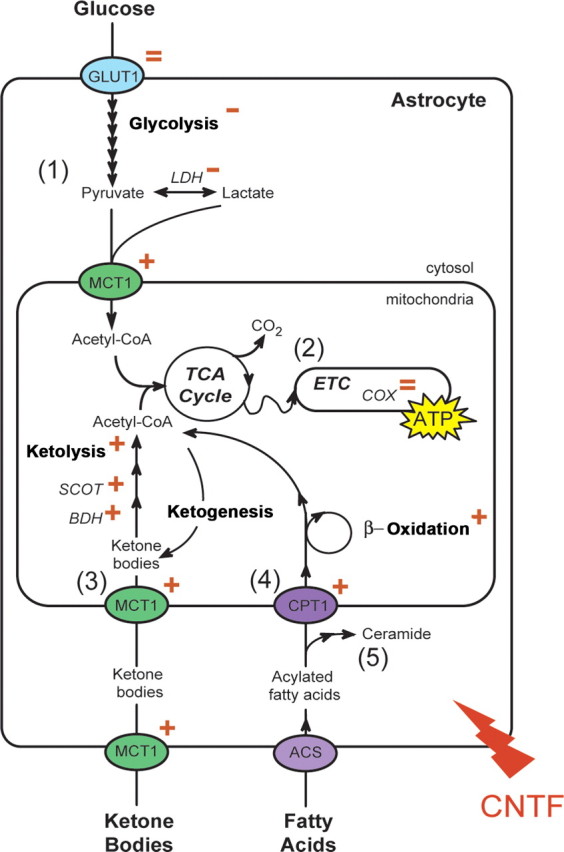Figure 11.

The pathways for energy production in astrocytes: effects of CNTF. (1) Glucose is taken up by astrocytes through the transporter Glut-1 and is oxidized into pyruvate through glycolysis. LDH transforms pyruvate into lactate that may be exported to the neurons. (2) Pyruvate and lactate enter the mitochondria where they are further oxidized through the TCA cycle and the electron transfer chain (ETC) to produce ATP. (3) Ketone bodies can also fuel the TCA cycle with acetyl-CoA after cellular and mitochondrial uptake by MCT1 and oxidation by BDH and SCOT. (4) Fatty acids are exclusively metabolized by astrocytes through acylation by acyl-CoA synthase (ACS), uptake by CPT1 and β-oxidation to produce acetyl-CoA that may either fuel the TCA cycle or be condensed into ketone bodies through ketogenesis. Ketone bodies, as lactate, may be given to neurons. (5) The fatty acid palmitate, once acylated, may alternatively fuel the pathway of ceramide neosynthesis, which is associated with apoptotic cell death. CNTF decreases glucose uptake and LDH activity. The expression of several key enzymes/transporters of ketolysis and β-oxidation are enhanced, consistent with the observed increase in the rate of ketone bodies and fatty acid oxidation. CNTF metabolic targets are represented with plus, equal, and minus red signs. Enzymes appear in italic.
